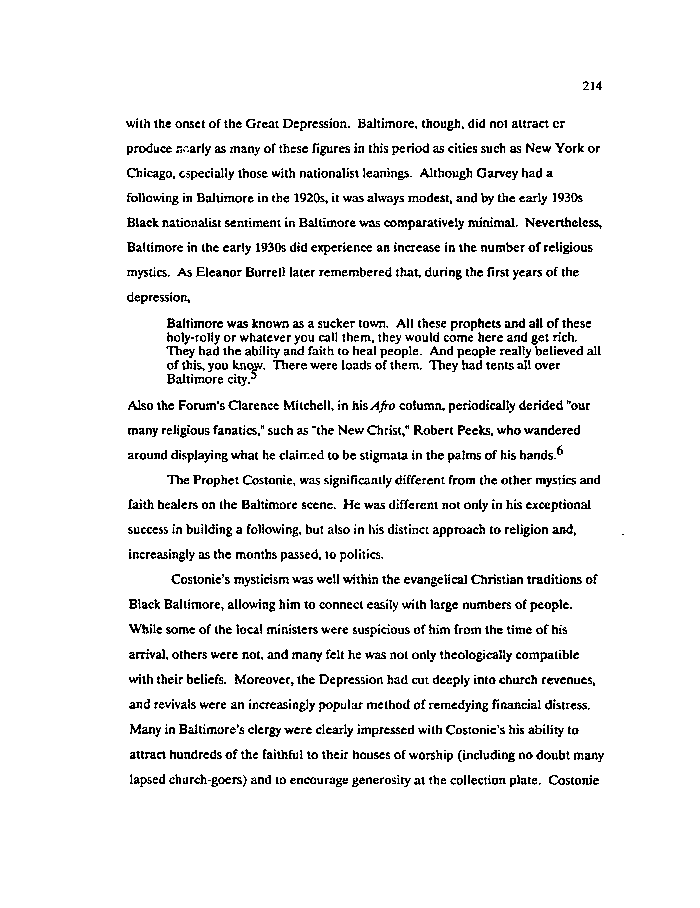|
214
with the onset of the Great Depression. Baltimore, though, did not attract or
produce nearly as many of these figures in this period as cities such as New York or
Chicago, especially those with nationalist leanings. Although Garvey had a
following in Baltimore in the 1920s, it was always modest, and by the early 1930s
Black nationalist sentiment in Baltimore was comparatively minimal. Nevertheless,
Baltimore in the early 1930s did experience an increase in the number of religious
mystics. As Eleanor Burrell later remembered that, during the first years of the
depression,
Baltimore was known as a sucker town. All these prophets and all of these
holy-roily or whatever you call them, they would come here and get rich.
They had the ability and faith to heal people. And people really believed all
of this, you know. There were loads of them. They had tents all over
Baltimore city.5
Also the Forum's Clarence Mitchell, in his Afro column, periodically derided "our
many religious fanatics," such as "the New Christ," Robert Peeks, who wandered
around displaying what he claimed to be stigmata in the palms of his hands.
The Prophet Costonie, was significantly different from the other mystics and
faith healers on the Baltimore scene. He was different not only in his exceptional
success in building a following, but also in his distinct approach to religion and,
increasingly as the months passed, to politics.
Costonie's mysticism was well within the evangelical Christian traditions of
Black Baltimore, allowing him to connect easily with large numbers of people.
While some of the local ministers were suspicious of him from the time of his
arrival, others were not, and many felt he was not only theologically compatible
with their beliefs. Moreover, the Depression had cut deeply into church revenues,
and revivals were an increasingly popular method of remedying financial distress.
Many in Baltimore's clergy were clearly impressed with Costonie's his ability to
attract hundreds of the faithful to their houses of worship (including no doubt many
lapsed church-goers) and to encourage generosity at the collection plate. Costonie
|

